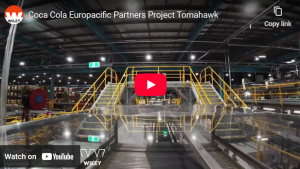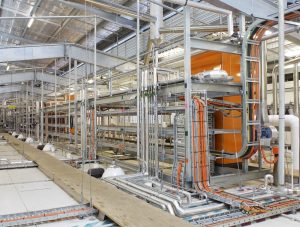This article was originally published in Food & Drink Business Magazine.
Done well, maintenance is the unsung hero of many food businesses, keeping the heart of the operations alive.
A successful asset management and maintenance strategy is aligned with the overarching business needs, enables timely and accurate decision making and above all, is SIMPLE. A well-executed food facility maintenance program will ensure that the heart of your business continues to beat, so what are the key things to look for in a maintenance solution?
- It is nimble—The solution operates efficiently, driven by a nimble-minded, decisive team. As circumstances change the maintenance strategies employed evolve, under a rapid and informed decision making model.
- It is smart—Decision makers have access to low volumes of high quality data empowering them to make high quality decisions.
- It is focussed—The maintenance system and team acknowledges the value of keeping their frame of focus small and investing in their problematic equipment.
- It is aligned—A good system avoids wasting time and resources with plant that doesn’t support the business production objectives. Reliability and OEE (overall equipment effectiveness) are key measures.
- It is systemised—a well-designed, efficient Computerised Maintenance Management System (CMMS) is always present.
- It is supported—the key ingredient is a supportive senior management team. They know the impact of asset reliability on their strategic plans and are strongly supportive of their maintenance teams.
Let’s look at some great tips and learnings.
Seek SIMPLICITY
When it comes to maintenance, complexity is the enemy. Focus only on actions inside your maintenance regime that contribute to the bottom line. This means preventing losses or down time while simultaneously maximising yield.
Down your downtime
Unplanned downtime cost is the single most valuable maintenance metric in your business.
It allows you to quantify your successes and provides the vital evidence of where to focus your maintenance energies. When a facility stops unexpectedly during a production cycle, do you know how much every minute is costing? If a business can’t answer this accurately, alarm bells should be sounding with the management team. This information is crucial in determining maintenance investment levels.
Who knows best?
Every facility has operational and maintenance staff who possess valuable knowledge on where to focus your maintenance manpower and budget. Know what they know! Take the time to engage with your knowledge experts and give them a voice in the decision making process.
Be definite about data
Never collect data for the sake of it. Invest in data collection when you know for certain it will help you make good decisions. Operations should not use SCADA data logging capability without first establishing a quantifiable link between that info byte and its capacity to improve your operations predictive ability. Look for key indicators that are precursors for equipment degradation or calibration errors. Don’t be afraid to leave half of your I/Os vacant on your automation installation if it simply wastes money.
For example, if you are collecting run hours on a bottling conveyor unit, ask yourself if this information has any failure predictive or production optimisation value. If the answer is no, stay away from it. In this example, it might be cost efficient to buy a thermographic camera and undertake weekly temperature scans on all roller bearings and electrical connections. Let it run to failure and let your manual inspection process be your first line of defence.
Excess data can become white noise and will hide valuable clues inside maintenance/performance reports.
IoT and Predictive Analysis
Data in contemporary facilities and plant or equipment is available from areas that were previously impossible to imagine. Data can be derived from just about any aspect of a modern operation. A maintenance program can drown in the tsunami of real time data, so it is important to track the most meaningful and indicative factors and translate that into valuable information and insights. Adopting Industrial Internet of Things (IIoT) technology to fuel these critical insights is increasingly important. Linking this with machine learning and predictive analytics can mean that maintenance can be the most powerful tool at your disposal when it comes to protecting uptime and operational yield.
Failure analysis – keep your field of vision small
The majority of preventable plant failures are likely to be caused by a small percentage of production assets. The 80/20 rule applies to maintenance programs as well and can means that 20% of assets are responsible for 80% of failures. There is also a financial correlation to this ratio, meaning that financial performance will benefit more rapidly from this approach.
This approach can help us focus on very small areas of our operations and engage formal maintenance techniques to protect our businesses from the majority of asset failure risks. In a short space of time, operations can generate quick wins by reducing preventable failures and enhancing OEE and availability statistics.
You can’t be an expert in everything
Encourage the input of external expertise in the conceptual and implementation stages when you are working on your maintenance strategy. The value generated by an expert viewing your asset and production challenges, in an objective unbiased way, can unlock alternatives that remain hidden from view when you live with the facility on a daily basis.
Constantly seek to change
Embrace the notion that you will never achieve a steady state inside your maintenance strategy. As assets wear out, or lose calibration, or production rates fluctuate, you need to respond decisively to align your plan to those changes.
Simplicity is THE fundamental building block to any successful asset maintenance strategy at your food facility. In the simplest terms, if a maintenance program is not helping you achieve your production objectives, eliminate the waste and refocus your resources to where it will.
Talk to one of the Team at Wiley on how you can manage maintenance at your food facility. Call 1300 385 988



